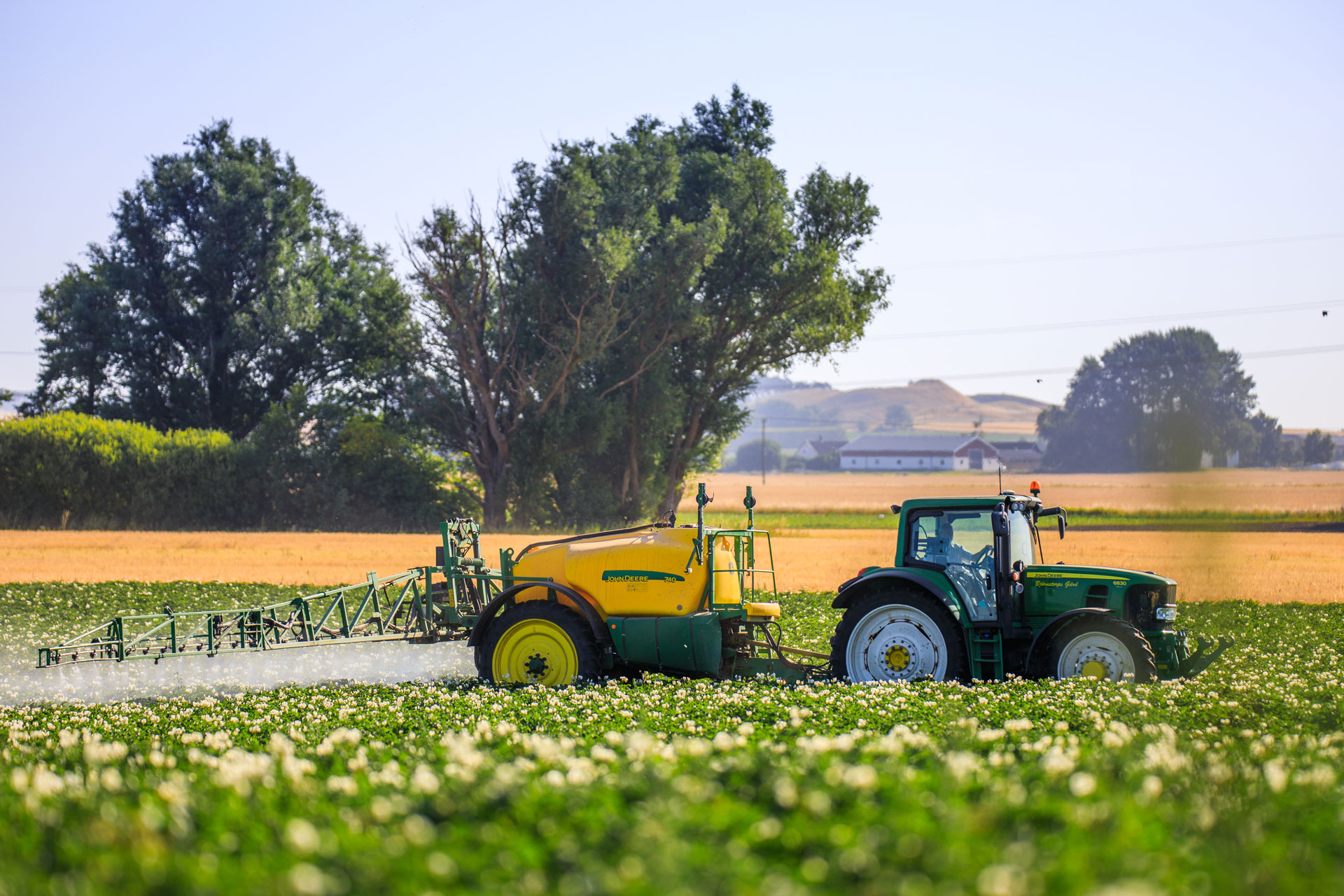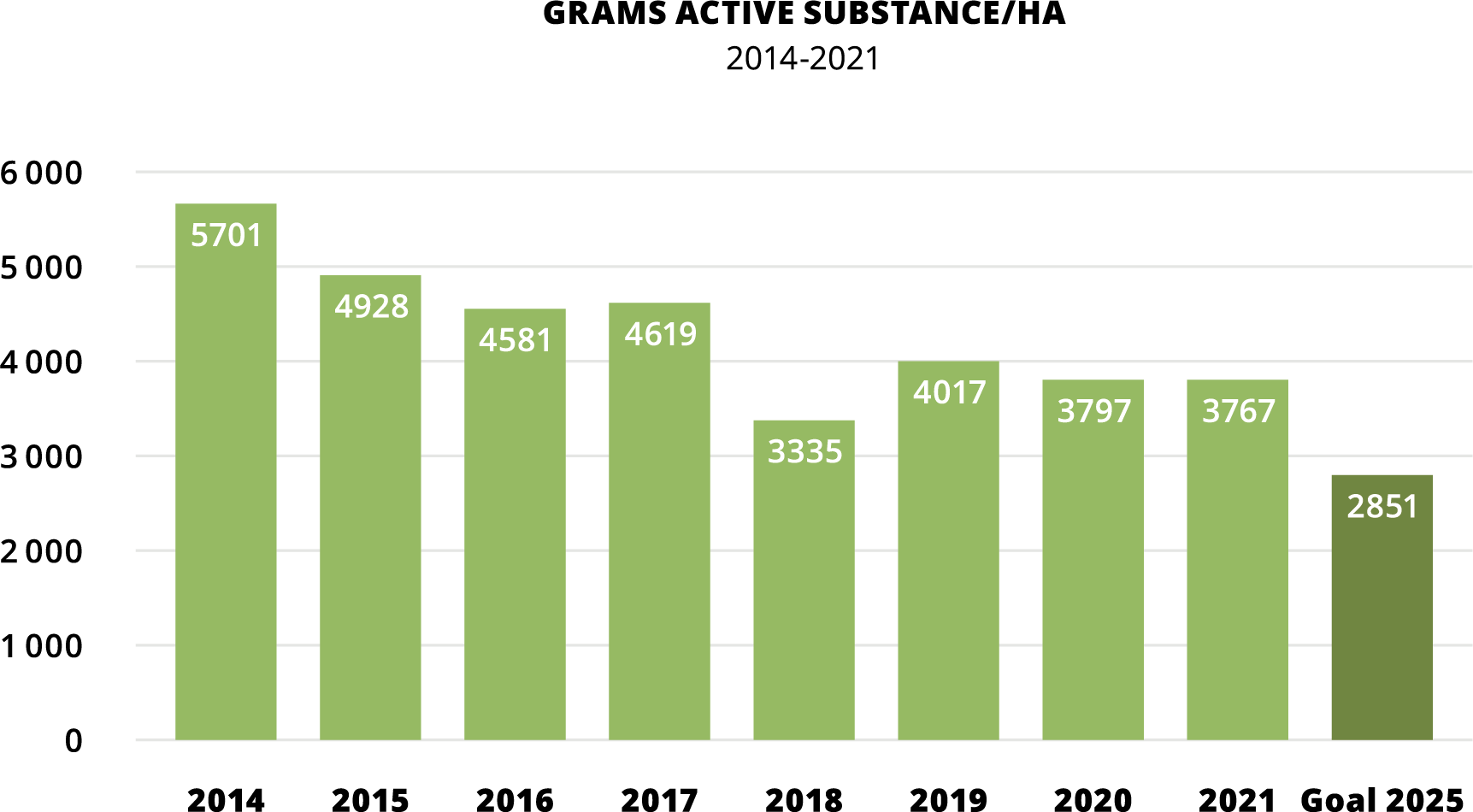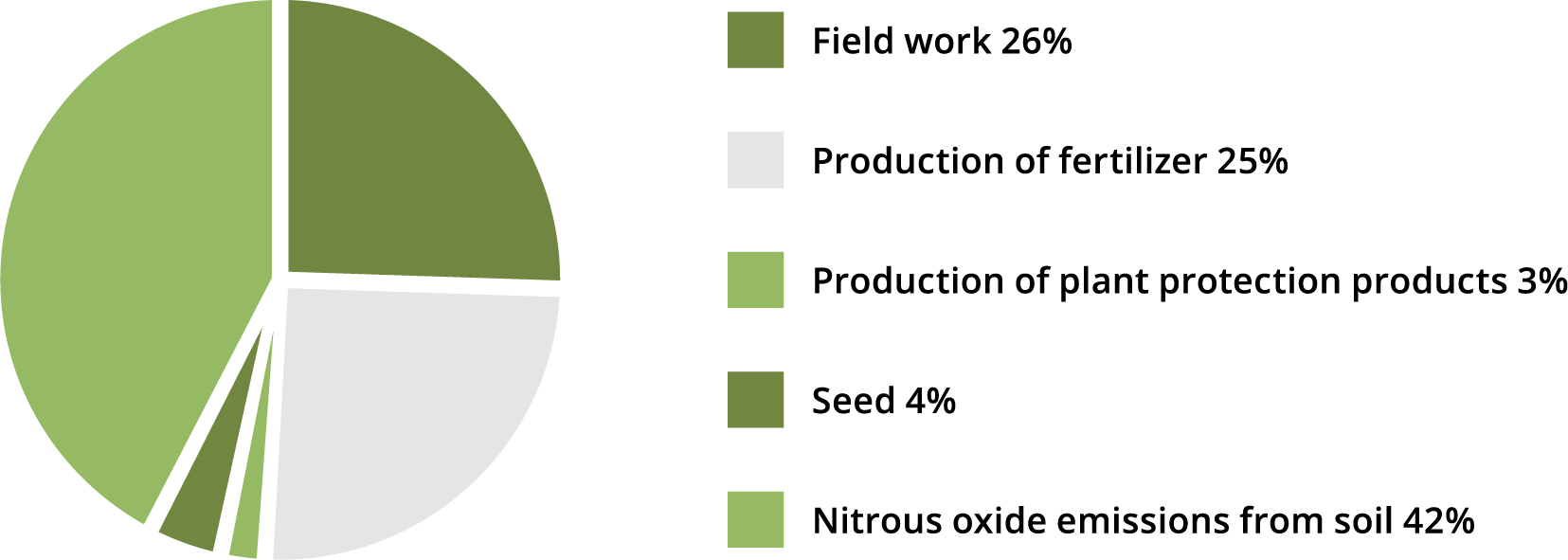Environmentally sustainable cultivation of starch potatoes
Naturally, our starch business also follows up on suppliers’ social responsibility. Our code of conduct for suppliers is signed by all suppliers and we follow up their efforts. Our focus for cultivation in Sweden is the environmental challenges, as we consider these to be greater here than the social issues.
Good progress towards halving the quantity of plant protection products
Plant protection products are used in cultivation of starch potatoes to combat weeds and illnesses that attack the plant – above all blight and the Alternaria fungus. Research conducted in this area, together with our trial cultivations, has shown that the quantity of protection products can often be reduced with little or no impact on the yield.
On the basis of this, at Lyckeby we now have a target for 2025 of reducing the quantity of plant protection products our potato suppliers use by half compared to the quantity used in 2014 per hectare, while maintaining the same yield. To date, the figure has reduced by 34%. To ensure that we reach our goal, we provide advice to our potato growers through weekly mailings during the cultivation season containing recommended dosages for plant protection products. The recommendations are based on existing forecasting models for blight and Alternaria.

Knowledge-based improvement
We work intensively to develop new forecasting models, including through cultivation trials where we evaluate the effects of plant protection products in different cultivation conditions. The growers come together at field meets, where they share information and experience with each other and with us. For example, very small amounts of protection products are required in dry conditions, as the risk of blight is very low.
The program to reduce the use of plant protection products is aimed at reducing the impact of farming on biodiversity. Reducing the use of plant protection products by 50% aligns well with “Farm to Fork”, where the goal is for plant protection products used within the EU to be halved by 2030.
Kristoffer Gustafsson
The climate impact of potato cultivation
Potato cultivation represents approximately 40% of Lyckeby’s carbon footprint, when we include our direct emissions of greenhouse gases from production and indirect emissions from elements such as raw materials, packaging, and transports.
Almost half of the emissions take the form of nitrous oxide from the cultivated areas, and it is difficult to affect this. Other emissions are caused above all during production of mineral fertilizer and through the use of fuel in cultivation.
The climate impact calculation indicates which activities we need to prioritize in the future to reduce our total carbon footprint in accordance with our goal to reduce emissions in Scope 3 by 20% between 2017 and 2025.





